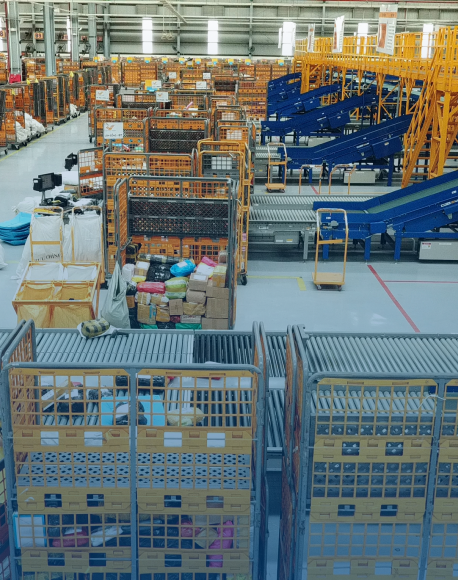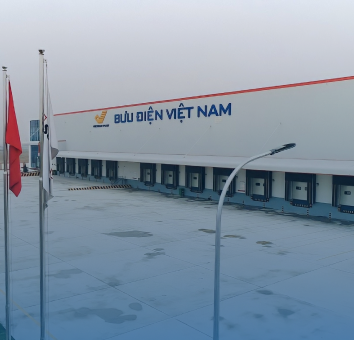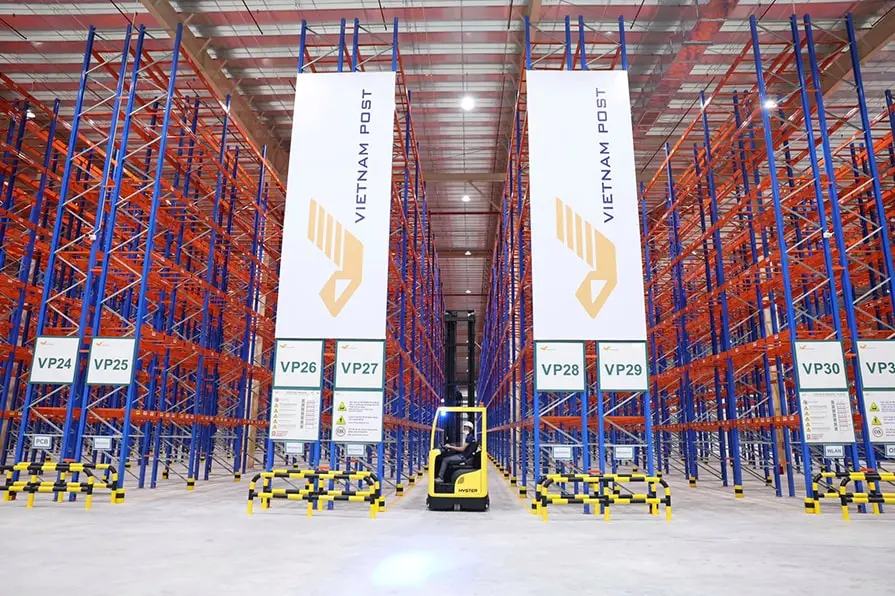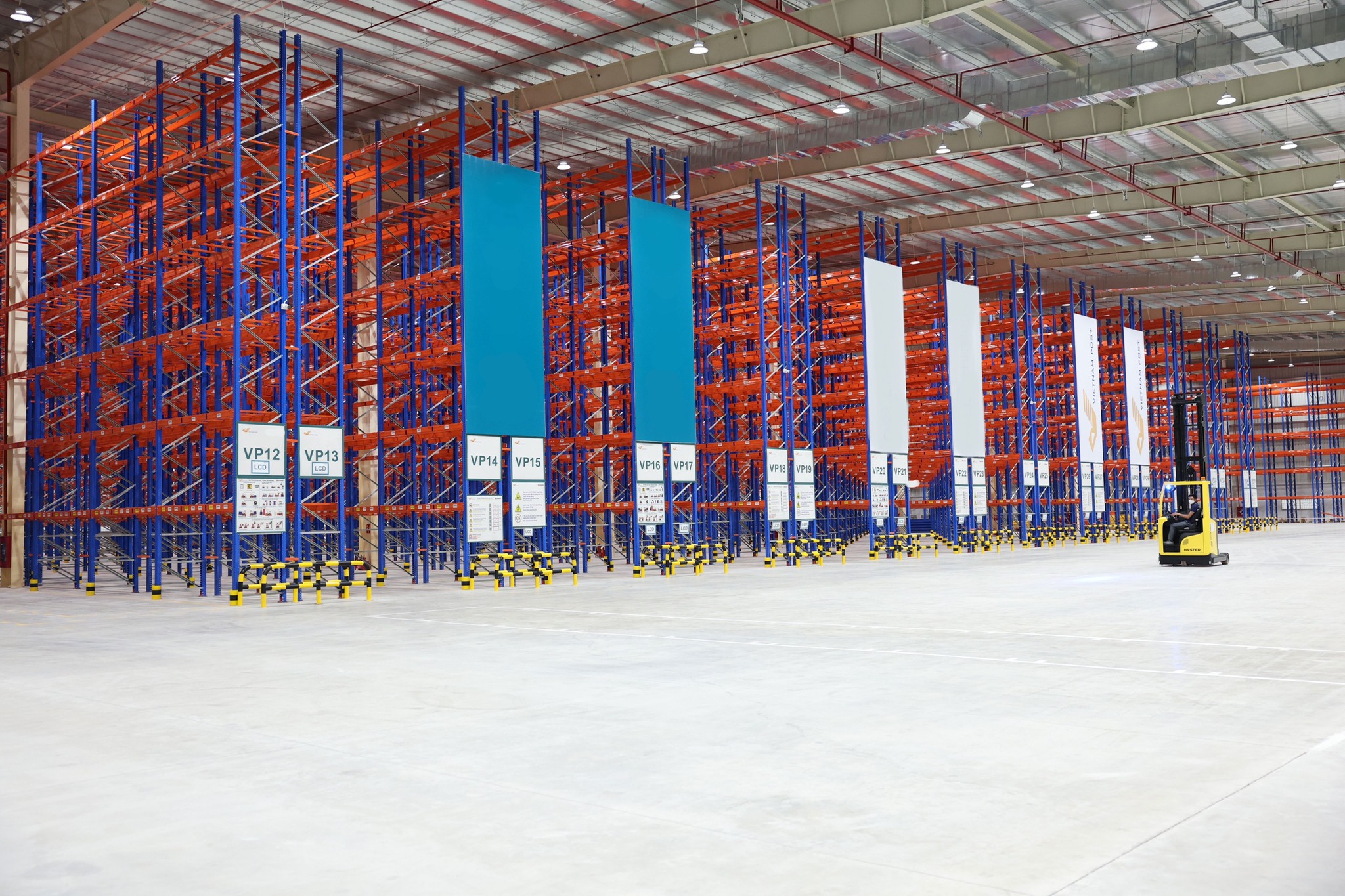1, Vietnam's impressive ranking in the world market
According to the World Bank's ranking, Vietnam currently ranks 64/160 countries in terms of logistics development and 4th in the ASEAN region after Singapore, Malaysia and Thailand.
According to the Agility 2022 ranking, Vietnam's logistics market is ranked 11th in the group of 50 emerging logistics markets globally. The compound annual growth rate (CAGR) in the 2022-2027 period of Vietnam's logistics market is forecast to reach 5.5%, in parallel with the strong recovery of the entire economy after the Covid pandemic with GDP after the first 9 months of 2022 reaching 8.93%.
2, Road transport is the most popular mode in Vietnam
In 2022, road transport is the most popular mode of transport with the volume of transported goods accounting for 79.84% of the total volume of transported goods, followed by inland waterways with 15.33%, while the proportion of goods transported by sea, rail and air remains at very low levels.
Inland waterway and sea transport are the high growth segments in 2022 with rates of 124.9% and 127.7% compared to 2021, followed by road with a rate of 120.9%, while rail and air transport do not change significantly compared to 2021 (General Statistics Office, 2022).
3, Professional Logistics Labor Force Is Still Too Few
According to the Ministry of Industry and Trade (2022), the number of workers with formal training in logistics accounts for only about 5%-7% of the number of workers currently working in this field; the ability to meet the demand for logistics human resources is only about 10% of market demand. Vietnam's logistics human resources are not only lacking in quantity but also weak in quality.
It is expected that by 2030, the demand for logistics human resources will be over 200,000 workers, with increasingly high requirements for professional qualifications and logistics skills. Human resources will be the decisive factor in helping Vietnamese logistics enterprises improve their competitiveness and expand their markets both domestically and internationally.
4, Abundant warehouse resources of Vietnamese Logistics
53.7% of Vietnamese logistics service enterprises provide warehouse services, which is one of the main services provided by Vietnamese logistics enterprises. As of September 2021, the country has 48 cold storage facilities with a capacity of 600,000 pallets.
Of which, the South has 36 cold storage facilities with a capacity of 526,364 pallets, the Central region has 1 cold storage facility with a capacity of 21,000 pallets and the North has 11 cold storage facilities with a capacity of 54,780 pallets. The country has more than 700 refrigerated trucks and 450 rail cars transporting refrigerated containers.
5, Vietnam's export potential has attracted many foreign enterprises
According to the Import-Export Department, as of 2021, the country has more than 43,000 logistics service enterprises. Of which, more than 5,000 enterprises operate in the field of international logistics, 69 large and medium-sized logistics centers, attracting investment in many fields.
89% are small and medium-sized Vietnamese enterprises, 10% are joint venture enterprises and 1% are 100% foreign-owned enterprises providing cross-border logistics services with big names in the list of the 50 largest logistics companies in the world such as: Kuehne + Nagel, DHL Supply Chain & Global Forwarding, DSV, DB Schenker...
6, The most exported items in 2023
In 2023, there will be 7 export items with over 10 billion USD, accounting for 66% of the country's total export turnover. These seven export items include:
- Computers,
- Electronic products and components;
- Phones and components;
- Machinery, equipment, tools, spare parts;
- Textiles;
- Footwear;
- Means of transport, spare parts;
- Wood and wood products.
7. Roads, railways and ports
According to the Vietnam Maritime Administration, the total length of expressways by 2023 will reach 1,822 km, double that of 2015. By 2025, Vietnam's expressway system is expected to reach about 3,000 km, helping to shorten transportation time and reduce logistics costs.
The total length of railways will reach 3,161 km, including 2,646 km of main lines and 515 km of stations and branch lines. Railways are being invested in upgrading and renovating to improve transport capacity.
Vietnam's seaports currently have 5 groups of seaports, distributed into 286 wharfs. Of which, the major seaport clusters of Hai Phong City and Ho Chi Minh City are both in the top 50 largest container ports in the world. Vietnam's seaports are being invested in upgrading and expanding to meet the increasing demand for cargo transportation.
Above are 7 interesting things about the Vietnamese Logistics industry that you may not know. Hopefully, this article will provide new knowledge to help readers gain a deeper insight into the Logistics industry in Vietnam. Contact Vietnam Post Logistics if you have any questions about Logistics and need advice on Logistics services.
Vietnam Post Logistics
Address: No. 05 Pham Hung Street - My Dinh 2 - Nam Tu Liem - Hanoi - Vietnam
Email: ga.logistics@vnpost.vn
Hotline: 024 3685 5333

.jpg)


.png)

